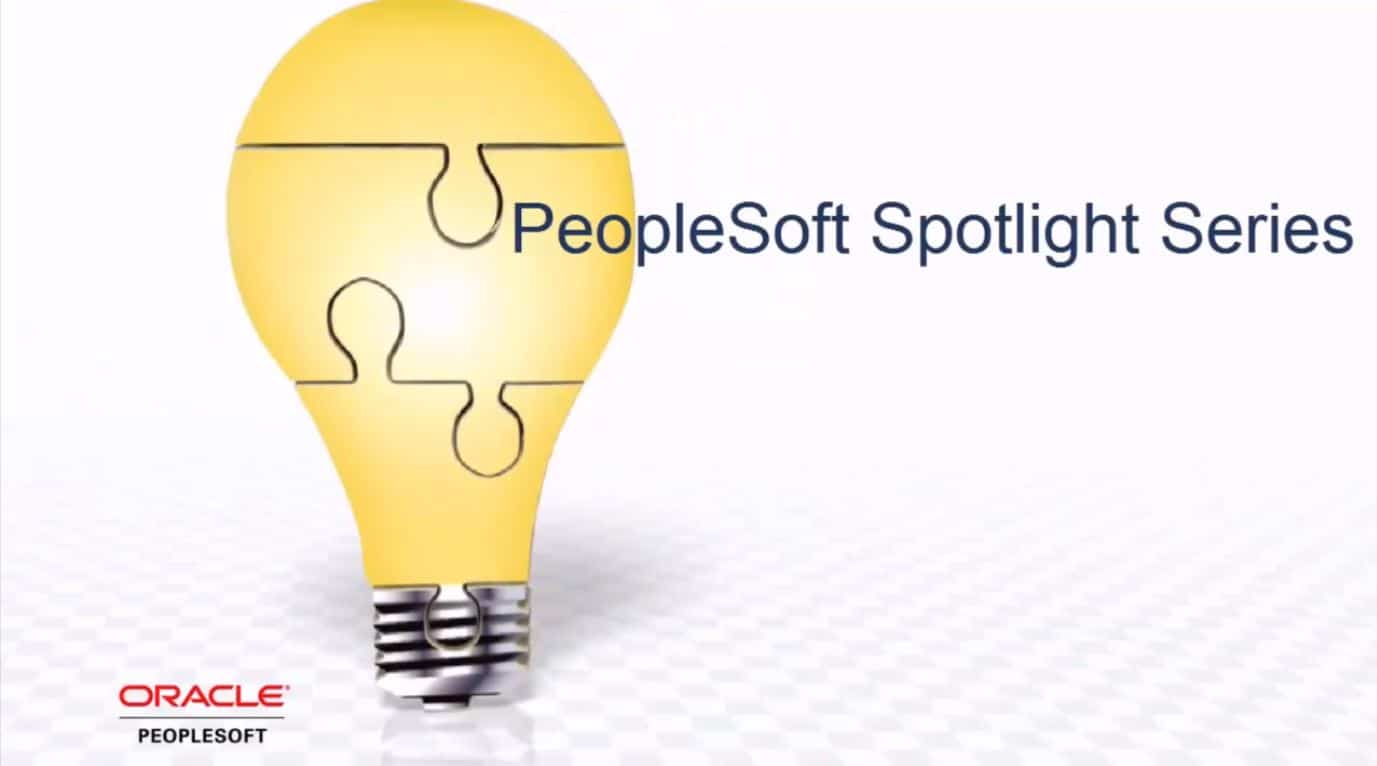PeopleSoft Spotlight Series: Administering PeopleSoft Search Framework In PeopleTools 8.56
-
Posted by Harry E Fowler
- Last updated 2/25/23
- Share

PeopleSoft Search Framework provides a standard, declarative method for creating, deploying and maintaining search indexes for all of your PeopleSoft applications in PeopleTools 8.56. PeopleSoft Search Framework uses Elasticsearch as the search engine. The PeopleSoft Search Framework includes pages and records that provide a centralized interface to create a search instance that provides connectivity between PeopleSoft Search Framework and the search engine. This allows you to:
- create search definitions and search categories,
- deploy search definitions and categories to build and maintain search indexes and
- search content using Global Search and search pages.
The PeopleSoft Search Framework provides two activity guides to complete the tasks to set up your search functionality – search designer and search administrator. PeopleSoft Search Framework provides two interfaces for end users – Global Search and search pages.
Managing Search Instance
Search Instance is the integration point between PeopleSoft and the Elasticsearch search engine. It can be created through the Search_Template template in Automated Configuration Manager. Additionally, a search instance can also be created in the Search Admin Activity Guide.
Different Types of Search Definitions and Categories
Search definition and search category are created in the Search Designer Activity Guide. The types of search definitions are based on the data source: PeopleSoft Query, Connected Query, the Web or a file. Search definition maps the PeopleSoft Query fields, web source or file source to searchable attributes. The search definition also enables you to attach security attributes to restrict access to the search results. A search definition can belong to one or more search categories, but it must belong to one search category with the same name as the search definition. Search categories are also created in search designer. A search category is essential in the search framework because search categories organize search definitions into manageable, logical groups of data. Search categories are required for searches. Search queries run only against search categories, not search definitions. A search definition must be a member of a search category before it can be searched. Improve search performance and results by limiting the number of indexes searched.
Indexing Search Data
Before end-users can submit search requests against the search framework deployed objects, the search indexes must first be built on the search engine. Prior to the index being built, a deployed search definition is an empty shell containing no searchable data. A search index needs to be built for search definitions.
To enhance the performance of indexing search data, PeopleSoft introduced a new technology called Direct Transfer to transfer attachment data directly to the Elasticsearch search engine. The Direct Transfer technology bypasses the integration gateway. It also supports the search definitions that use query or connected query. PeopleSoft uses the full Direct Transfer technology throughout all search documents with or without attachments to the Elasticsearch search engine.
Failover Mechanism from PeopleSoft Search Framework
PeopleSoft Search Framework uses Elasticsearch search engine to provide functionality. Elasticsearch search engine is distributed by nature, that is, it knows how to manage multiple nodes and manages failover through primary shards and replicas. Additionally, to enable users to effectively use the multiple nodes as a failover mechanism, PeopleSoft Search Framework provides you the framework to configure multiple nodes in a search instance of your PeopleSoft implementation.
Monitoring an Elasticsearch Cluster in Health Center
The PeopleSoft Health Center is the monitoring framework that provides monitoring and performance data of the domains within a PeopleSoft implementation, including the Elasticsearch cluster. The monitoring and diagnostic dashboards for an Elasticsearch cluster enable users to understand the performance of the Elasticsearch cluster and the possible performance issues that may arise. PeopleSoft Health Center provides a snapshot of the Elasticsearch cluster and the nodes in the cluster. However, users cannot update the state or run tasks on the cluster. The data displayed includes the number of the nodes, the number of indexes and the number of documents, among other performance data.
For additional information on administering PeopleSoft Search Framework in PeopleTools 8.56, check out the PeopleSoft Spotlight Series: Administering PeopleSoft Search Framework in PeopleTools 8.56 video from Oracle PeopleSoft.
